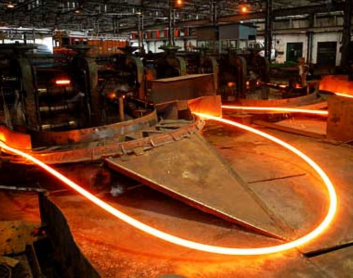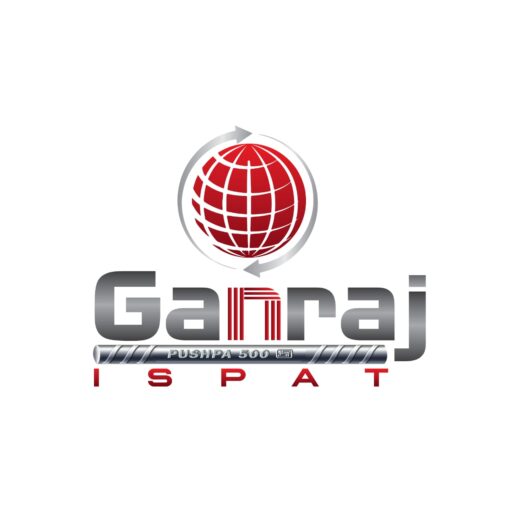
Thermo-Mechanically Treated (TMT) bars are a critical component in the construction industry, known for their high strength, ductility, and resistance to corrosion. Understanding the manufacturing process of TMT barcan provide insights into why they are preferred over traditional steel bars. In this blog, we will delve into the TMT bars manufacturing process, from raw materials to the finished product, highlighting each step involved.
Raw Material Selection
The manufacturing process of TMT bar begins with the selection of high-quality raw materials. Typically, iron ore, coal, and limestone are the primary raw materials used. These materials are carefully chosen and tested to ensure they meet the required quality standards. The quality of the raw materials significantly influences the properties of the final TMT bars.
Iron Making
The first step in the TMT bar process is iron making. Iron ore is subjected to a series of chemical and physical processes to extract iron. The most common method is the blast furnace process, where iron ore is reduced with coke (a form of carbon) in the presence of limestone. This process produces molten iron, also known as hot metal, which is then used in the next stage of steelmaking.
Steel Making
The molten iron from the blast furnace is converted into steel through a process called Basic Oxygen Furnace (BOF) or Electric Arc Furnace (EAF). In the BOF method, oxygen is blown into the molten iron to reduce the carbon content and produce steel. In the EAF method, recycled steel scrap is melted using electric arcs. The choice of method depends on factors such as cost, availability of raw materials, and environmental considerations.
Secondary Refining
Once the steel is produced, it undergoes secondary refining to remove impurities and achieve the desired chemical composition. This stage involves processes such as degassing, desulfurization, and dephosphorization. The refined steel is then poured into a continuous casting machine to form billets, which are long, rectangular pieces of steel.
Rolling and Quenching
The billets are heated in a reheat furnace to around 1100-1200 degrees Celsius to make them malleable. They are then passed through a series of rolling stands, which progressively reduce their thickness and shape them into the desired form. This stage is crucial in the TMT bar production processas it determines the final dimensions of the bars.
Immediately after the rolling process, the bars undergo quenching. Quenching involves rapid cooling by spraying water at high pressure. This creates a hardened outer surface while the core remains hot and soft. The quenching process is essential in the TMT steel processas it imparts high strength and toughness to the bars.
Self-Tempering
After quenching, the bars undergo a process known as self-tempering. The heat from the core of the bar flows to the surface, tempering the outer layer. This process reduces the brittleness of the quenched layer and gives the TMT bars their characteristic combination of strength and ductility.
Atmospheric Cooling
The final stage in the TMT bar process is atmospheric cooling. The bars are allowed to cool naturally in the air. This gradual cooling ensures that the core remains ductile while the outer surface retains its strength. The result is a TMT bar with a tough exterior and a flexible core, making it ideal for use in construction.
Quality Control and Testing
Throughout the TMT bar production process, stringent quality control measures are implemented to ensure that the bars meet the required standards. Samples are taken at various stages and subjected to tests such as tensile strength, elongation, bend, and rebend tests. These tests verify that the TMT bars possess the necessary mechanical properties and are free from defects.
Packaging and Dispatch
Once the TMT bars pass all quality tests, they are cut into standard lengths and bundled for packaging. The bundles are then labeled with relevant information such as grade, size, and batch number. The final step is dispatching the TMT bars to various construction sites or storage facilities. Proper packaging and handling ensure that the bars reach their destination without any damage.
Advantages of TMT Bars
Understanding the manufacturing process of TMT bar highlights several advantages over traditional steel bars. The unique combination of strength and ductility makes TMT bars highly resistant to earthquakes and other dynamic loads. Their superior corrosion resistance ensures a longer lifespan, reducing maintenance costs. Additionally, the consistent quality and uniformity of TMT bars make them easier to work with, enhancing construction efficiency.
Applications of TMT Bars
TMT bars are used in a wide range of construction applications. They are the preferred choice for reinforcing concrete structures such as beams, columns, slabs, and bridges. TMT bars are also used in the construction of dams, flyovers, and industrial structures. Their versatility and reliability make them an essential material in modern construction.
Conclusion
The manufacturing process of TMT bar involves several stages, each critical in producing high-quality bars that meet stringent standards. From raw material selection to the final product, every step is meticulously controlled to ensure the best possible outcome. For more details on TMT bars and their manufacturing process, contact us at Plot No: A-3, Nagar-Pune Road, SupaParner Industrial Area, Supa, Parner, Ahmednagar – 414003. Call us at +91 9766173352. sales@ganrajispat.com. Visit our website – www.pushpasteel.com

Recent Comments